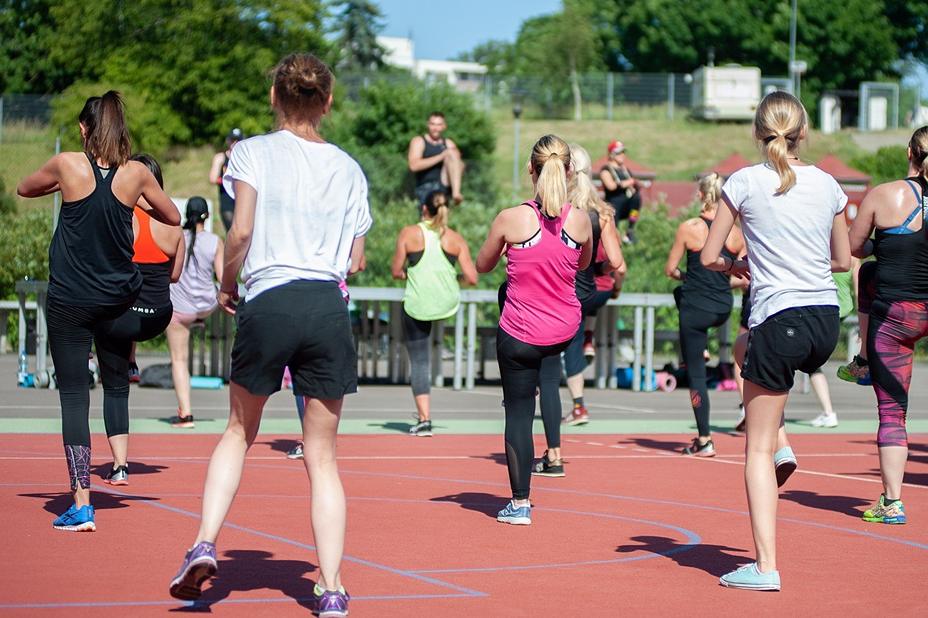Today’s hustle culture is quite unforgiving; therefore, the well-being of your community must take center stage. Remember, collaborative efforts are key to improving communal health. However, with your busy schedules, you may not fully recognize the impact of your contributions. Whether it’s sharing helpful information online, volunteering locally, or simply offering a helping hand to a neighbor, every small act of kindness plays a crucial role in fostering thriving communities.
Recently, issues concerning the health and well-being of communities have gained substantial traction. The increased focus on the matter arises from evolving viewpoints and a growing recognition of the essential role community health plays in our daily lives. In response to this growing awareness, some proactive individuals have stepped up to take meaningful initiatives to improve the well-being of their communities. Yet, for many, the challenge lies in figuring out where to start.

Contents
Ways You Can Improve Health In Your Community
Fret not; here’s a list of ways you can improve health in your community.
1. Volunteer When You Can:
Volunteering is a great way for community members to make a tangible impact on their society. It cultivates a culture of active citizenship. Volunteering addresses immediate needs and allows people to use their skills, time, and energy for the greater good.
These opportunities offer you the chance to engage directly with your community’s needs, whether by assisting at a local shelter, joining in on clean-up initiatives, or lending your expertise to healthcare education programs. After the pandemic, the healthcare community has witnessed a rise in the need for public health experts. For instance, advanced degrees like the DrPH and PhD have become the most sought-after by the research community. However, you must have a relevant degree to assist in such matters. To better understand which degree to pursue, you can explore online literature outlining PhD vs DrPH differences to make a well-informed decision about your educational path.
By contributing your time, knowledge, and assets, you can inspire others to do the same and effect change.
2. Build Community Gardens:
Creating communal gardens is a practical and community-centric way to access fresh, locally-grown produce. These shared spaces encourage sustainable and environmentally friendly practices and serve as hubs for social interaction and collective well-being. Communal gardens bring the neighborhood together, promoting unity and shared responsibility for the environment.
Here’s a list of what you can typically grow in a community garden:
- Vegetables
- Herbs
- Fruits
- Flowers
- Medicinal Plants
- Perennials
- Companion Plants
- Aquaponics
3. Promote Hygiene:
Teaching your community about good hygiene during disease outbreaks is super important, and you should tackle it from all angles. That means spreading the word through different channels like social media and local news to ensure everyone gets the memo on staying clean and healthy. Plus, you can host workshops, webinars, and school programs to ensure people of all ages are oriented to good hygiene practices. And you know what makes a big difference? Getting your community leaders and health workers on board to advocate for good hygiene.
When educating the community about hygiene, it’s crucial to focus on several key components:
- Promote proper handwashing with soap and water for at least 20 seconds, especially before eating, after using the restroom, and after coughing or sneezing.
- Teach individuals to cover their mouth and nose with a tissue or their elbow when coughing or sneezing to prevent the spread of respiratory infections.
- Educate the people on how to wear, remove, and dispose of face masks, especially during disease outbreaks.
- Highlight the significance of proper waste disposal to prevent environmental contamination and the spread of diseases.
- Encourage daily showers, brushing teeth, and regular grooming, particularly for children.
- Address the unique hygiene needs of menstruating individuals, including the proper disposal of menstrual products.
- Promote awareness for vaccination and adherence to immunization schedules to prevent vaccine-preventable diseases.
- Teach the correct usage and disposal of PPE, like gloves, gowns, and masks, particularly during outbreaks.
4. Organie Clean-Up Campaigns:
Engaging in community cleaning events is a proactive way to enhance air quality and ensure a cleaner neighborhood. These events mobilize residents to tackle litter, debris, and pollution in their neighborhoods, parks, and public spaces. By clearing away pollutants and waste, these efforts reduce the risk of soil and water contamination, which can harm ecosystems and public health.
Here are some events you can organize to promote cleaning:
- Neighborhood Clean-Up Days
- River and Beach clean-ups
- Tree Planting Drives
- Park Beautification Projects
- E-waste Recycling Events
- Hazardous Waste Disposal Days
- Community Garden Clean-Ups
- School Campus Clean-Ups
- Green Initiatives
- Upcycling Workshops and Art Projects
- Environmental Education Fairs
5. Ensure the Availability of Healthcare:
Ensuring everyone gets the healthcare they need isn’t just about regularizing hospital visits. It’s also about teaching people how to stay healthy and giving them the information and tools to make smart choices about their health.
This could involve setting up community clinics or mobile health units through collaboration with local healthcare providers. Partnerships with insurers and nonprofits can extend health coverage to disadvantaged groups. Additionally, advocating for legislation that reduces barriers and enhances healthcare access is crucial.
6. Invest in Health Education:
Foster community health awareness through the dissemination of information and resources. Organize sessions, workshops, or virtual webinars that discuss different health-related topics, such as managing chronic illnesses, fitness routines, nutrition, and sexual health. Partner with schools to seamlessly incorporate in-depth health education into the standard curriculum. Distribute informational pamphlets, flyers, or educational materials specifically tailored to address prevalent health issues within the community.
7. Provide Mental Health Resources:
Raising awareness about mental health issues is crucial in destigmatizing them and promoting mental well-being. It’s also important to provide individuals with readily available resources and support networks.
This entails providing information about local mental health services, crisis helplines, therapy options, and peer support groups. It’s about creating a safety net for those struggling with mental health challenges, ensuring they know where to turn for help and that they are not alone in their journey.
8. Care for Older Adults:
Creating programs geared towards improving seniors’ health and overall quality of life is of utmost significance, as it serves to preserve their dignity and well-being. These initiatives encompass a wide range of services, such as regular health evaluations, avenues for social engagement, and access to pertinent information about the aging process. Additionally, they might involve offering transportation, in-home healthcare services, and support for caregivers. Through these initiatives, we can foster their physical and emotional well-being, reduce social isolation, and ensure they maintain an active and engaged role within the community.
9. Working Toward Smoking Cessation:
Smoking increases healthcare costs due to smoking-related illnesses, strains healthcare resources, and diminishes overall productivity. Secondhand smoke exposure poses risks to non-smokers, particularly children. Smoking-related air pollution harms air quality.
Providing resources and support to help community members quit smoking is a pivotal health initiative. Smoking cessation programs typically offer a combination of counseling, nicotine replacement therapies, and educational material to empower individuals to overcome addiction. These programs not only enhance participants’ physical health by reducing the risks of smoking-related illnesses but also improve community well-being. By helping community members quit smoking, you can also reduce secondhand smoke exposure.
10. Join Exercise Clubs:
Creating clubs for walking, running, or cycling enthusiasts within the community is a proactive approach to enhancing physical fitness and overall well-being. These clubs provide a structured and supportive environment for individuals of all ages to exercise regularly. They not only promote physical health but also foster a sense of camaraderie, encouraging social interaction and community bonding. Moreover, such clubs can inspire individuals to set and achieve fitness goals, increasing motivation and self-esteem.
Here are some types of exercise clubs you can join and even start:
- Organize group walks in parks or neighborhoods suitable for all fitness levels
- Create running clubs with options for beginners and experienced runners
- Arrange bike rides or cycling clubs to explore local trails and roads
- Offer outdoor yoga sessions for flexibility and stress relief
- Host dance classes or events, such as Zumba or line dancing
- Conduct aerobics sessions for cardiovascular fitness
- Promote team sports like soccer, volleyball, or basketball
- If facilities are available, community swimming programs can improve cardiovascular health
- Enhance core strength, flexibility, and posture through Pilates
- Offer martial arts classes for self-defense and physical fitness
- Organize low-impact exercises for older adults
11. Evaluate and Make Changes:
Regularly assess the outcomes of your endeavors. Collect data on community engagement, contentment levels, and health metrics. To identify areas that need improvement, take feedback from community members and stakeholders. Be adaptable in aligning your strategies with evolving community needs and objectives.
Conclusion
Enhancing community health is a collective effort demanding collaboration, unwavering perseverance, and a steadfast commitment to change for the better. Your determination and motivation are crucial for achieving real change. Ensure every community member feels fully engaged in every initiative undertaken. Together, let’s work towards building a healthier future that benefits all members of the community, fostering well-being and vitality for generations to come.


